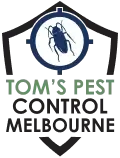Prompt, Affordable Same-Day Pest Control in Melbourne – From $129.
- Home
- Pest Treatments
- Termite Inspection & Treatment
- Ant Pest Control
- Bed Bug Treatment
- Beetle Pest Control
- Bird Proofing
- Borer Pest Control
- Cockroach Control
- Flea Treatment
- Fly Control
- Fox Trapping
- Mites Control
- Mosquito Pest Control
- Moth Control
- Possum Removal Service
- Rodent Control
- Silverfish Treatment
- Spider Control Treatment
- Wasp Control Services
- End of Lease Pest Control
- Commercial Pest Control
- Office Pest Control
- Restaurants & Cafes Pest Control
- Hospitality Pest Control
- Education Facilities Pest Control
- Hospital & Aged Care Pest Control
- Pest Control Food Industry
- Factories & Warehouses Pest Control
- Government Buildings Pest Control
- Assets & Facilities Pest Management
- Farming and Agriculture Pest Control
- Strata Pest Control
- Construction Pest Control
- Termites
- Pest Info
- Pest Inspections
- Contact
- Home
- Pest Treatments
- Termite Inspection & Treatment
- Ant Pest Control
- Bed Bug Treatment
- Beetle Pest Control
- Bird Proofing
- Borer Pest Control
- Cockroach Control
- Flea Treatment
- Fly Control
- Fox Trapping
- Mites Control
- Mosquito Pest Control
- Moth Control
- Possum Removal Service
- Rodent Control
- Silverfish Treatment
- Spider Control Treatment
- Wasp Control Services
- End of Lease Pest Control
- Commercial Pest Control
- Office Pest Control
- Restaurants & Cafes Pest Control
- Hospitality Pest Control
- Education Facilities Pest Control
- Hospital & Aged Care Pest Control
- Pest Control Food Industry
- Factories & Warehouses Pest Control
- Government Buildings Pest Control
- Assets & Facilities Pest Management
- Farming and Agriculture Pest Control
- Strata Pest Control
- Construction Pest Control
- Termites
- Pest Info
- Pest Inspections
- Contact
Singapore Ants
Singapore Ants Identification & Control
Singapore ants are also known as destroyer ants or ninja ants. These ants like to eat a variety of food items right, from sweets to animal material. As a result, they form slow-moving trails and are considered to be dangerous for humans.
These ants measure about 1.5-3.0mm and have light yellow to dull brown-yellow bodies and darker abdomens. Their head and bodies are smooth, shiny, and unsculptured. However, the top of their heads has fine transverse ridges. These ants have small eyes and antennae with 12 segments. Each mandible of these ants has 3 strong teeth and a fourth tiny one.
Singapore ants can be found in busy habitats near water sources. They are a ground or tree-dwelling species likely to nest in pot plants and trees. Once they enter homes or other properties, they will likely occupy the wall and roof cavities and invade the electrical sockets.
Colonies of these ants are typically highly organised and are made up of multiple queens, many workers, and a significant number of soldiers. Reproduction is often done through parthenogenesis, which means the eggs can develop without being fertilised.
This leads to all-female colonies that produce tens of thousands of tiny little workers. Furthermore, some studies suggest this species may even be able to create clones from a single egg.
Even more incredible is the fact that queen ants can mate up to 20 times throughout their lifetime, producing enough fertilised eggs to build an entire colony in the eventuality of the mother queen’s death or incapacitation.
Eating Habits
These ants forage along narrow trails and have a broad diet that includes living and dead insects, insect eggs, nectar, seeds, etc. They also eat food rich in sweets, fats, and proteins. If they enter your home, they will likely eat almost anything available.
Singapore Ant Prevention
The best way to prevent Singapore ants from invading your property is by ensuring no gaps or openings in walls and foundations. Seal off any potential entrances, such as window frames, door thresholds, and other small cracks in the foundation.
It is also essential to regularly inspect outdoor areas for signs of ant activity and remove any excess plant materials or debris near the home. Finally, it is necessary to maintain a clean, tidy house and garden to discourage these ants from invading. Regularly remove any food crumbs or spilled liquids that may attract these ants and keep pet food dishes clean.
Threats
Singapore ants are destructive pests that may damage your clothes, stored food, and electrical systems. These ants threaten humans and native species of plants and animals. Their sting can be painful for humans. In addition, entire nests of Singapore ants can be transported in packages of food or clothing, thus leading to widespread infestation.
Tom's Pest Control – The Ant Removal Experts
Our team of experts provides effective and affordable ant removal services in the industry. We understand that ants can be a nuisance, and we are dedicated to helping you get rid of them as quickly and effectively as possible.
With years of experience in the field, our technicians know precisely how to identify the type of ant infestation your home has and the most effective methods for eliminating it. In addition, we use safe and eco-friendly products to ensure that you and your home remain safe while we get rid of your ant problem.
Our staff is willing to answer any questions you have related to our services or the process of removing ants from your home. We are confident that we can provide you with the best ant removal services.
Call Us
Don’t wait any longer to address your pest problem. Instead, call the pest control experts at Tom’s Pest Control Melbourne now for reliable, safe, and effective bull ant removal.
Frequently Asked Questions
Do Singapore Ants Have Another Name?
The scientific name of Singapore ants is Trichomyrmex destructor. These ants are also known as destroyer ants, destructive trailing ants, and ninja ants.
Where Do These Ants Nest?
These ants are ground or tree-dwelling species commonly seen in modified habitats near water. If they enter homes, they nest in walls and roof cavities and invade electrical sockets. You will likely find their nests in pot plants outside your property or in standing trees like coconut plantations.
How to Identify Singapore Ants?
Singapore ants are light yellow to dull brownish yellow and have dark abdomens. They have 4 teeth on each mandible and measure about 1.5-3.0mm. It is easy to identify this species through their tiny eyes and smooth, shiny heads and bodies.

